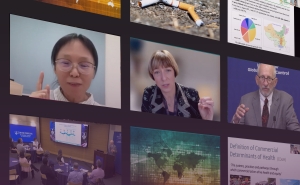Interfacing Living and Non-Living Systems Through Extracellular Electron Transfer
Wolman Seminar

Interfacing Living and Non-Living Systems Through Extracellular Electron Transfer
Benjamin Keitz, PhD, Associate Professor
Frank A. Liddell, Jr. Centennial Fellowship in Chemical Engineering
McKetta Department of Chemical Engineering
University of Texas at Austin
Oct. 8 @ 3 P.M.
Homewood, Shaffer Hall 302 & via Zoom
Register
Abstract: Electroactive bacteria possess unique biological machinery for transporting electrons across biological membranes and over micron distances in a process termed extracellular electron transfer (EET). In nature, these organisms couple their metabolism to the oxidation/reduction (redox) of environmental metals and have shaped the biology, geology, and evolution of Earth. My lab is interested in developing EET into a universal interface between biotic and abiotic systems by exploiting it’s ability to electronically connect intra- and extracellular spaces. Specifically, we employ techniques from microbiology, synthetic biology, and metabolic engineering to program EET in the model electroactive bacterium Shewanella oneidensis. Through these strategies, we establish metabolic and genetic control over a variety of redox-driven catalytic and material transformations. For example, we show that bacteria can control abiotic or biorthogonal reactions including controlled radical polymerization and Cu-catalyzed azide-alkyne cycloaddition (CuAAC, ‘Click’ chemistry) through the EET interface. These reactions can serve as outputs for gene expression, which allows their activity to be controlled using synthetic gene circuits that respond to multiple, complex inputs. We also demonstrate that similar methods for programming EET can connect cellular computation to changes in material properties or microelectronic devices. Ultimately, our efforts highlight how EET can be exploited to interface biological sensing, computation, and actuation with a variety of chemical and electronic systems.





